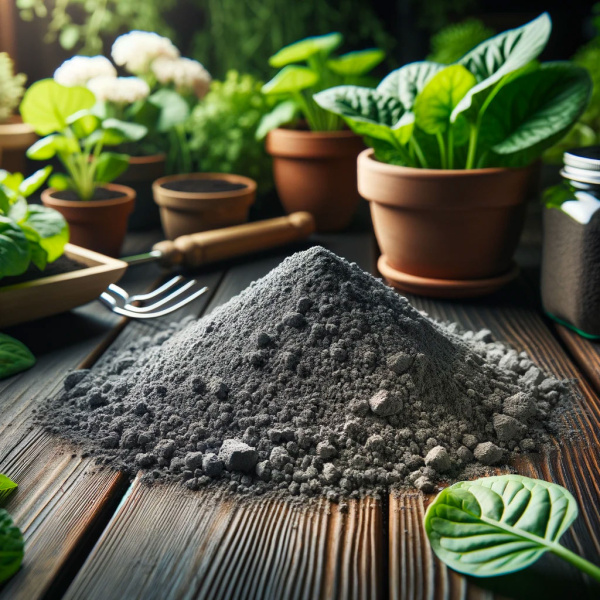
Wood Ash Introduction
Wood ash, the residue left after burning wood, is a valuable soil amendment that offers a natural way to enrich garden soil with essential nutrients.
Rich in potash (potassium carbonate), lime (calcium carbonate), and trace elements, wood ash can enhance soil fertility, raise pH levels, and contribute to healthier plant growth.
This guide will explore the benefits of wood ash in the garden, its nutritional profile, effective application methods, compatibility with various plants and soil types, and its role in sustainable gardening practices.
Typical NPK Value: 0-1-3

Wood Ash Key Benefits
Incorporating wood ash into your garden soil brings several advantages:
- Nutrient Boost: Provides potassium and calcium, essential for plant health and growth, as well as trace minerals like magnesium and zinc.
- pH Adjustment: Can help to raise the pH of acidic soils, making it an excellent liming alternative for gardeners looking to sweeten their soil.
- Pest Deterrent: The coarse texture and alkaline nature of wood ash can help deter certain pests, such as slugs and snails, from the garden.
- Soil Conditioner: Improves soil structure, enhancing drainage in clay soils and water retention in sandy soils.

Wood Ash Nutritional Profile
Wood ash is primarily valued for its potassium content, often ranging from 3-10%, depending on the wood source.
Potassium is vital for plant health, regulating water uptake and supporting enzyme activation.
Wood ash also contains calcium, which is essential for cell wall strength and growth, and smaller amounts of magnesium, phosphorus, and trace minerals that support overall plant nutrition.

How to Use Wood Ash
Using wood ash in your garden is straightforward, but it should be done cautiously:
- Soil Amendment: Apply wood ash to the garden sparingly, using no more than 10-20 pounds per 1,000 square feet annually. It's best applied in the fall or winter to allow nutrients to integrate into the soil before spring planting.
- Compost Enhancer: Sprinkle small amounts of wood ash into your compost pile to boost its nutrient content and help neutralize acidity, promoting a balanced decomposition process.
- Pest Deterrent: Lightly dust wood ash around the base of plants to deter pests. Reapply after rain, as wood ash is easily washed away.

Ideal Plants and Soil Types
Wood ash is especially beneficial for plants that require higher pH levels and are heavy potassium feeders, such as root vegetables (e.g., carrots, potatoes) and flowering plants.
It's most suitable for acidic soils in need of pH adjustment.
However, caution is advised when using wood ash around acid-loving plants like blueberries and rhododendrons, as it can raise the soil pH too much for their liking.

Sustainability and Environmental Impact
Using wood ash as a soil amendment is a sustainable practice that recycles waste material into a valuable garden resource.
It reduces reliance on chemical fertilizers and lime, promoting a more organic and eco-friendly approach to gardening.
Additionally, by enhancing soil health and plant resilience, wood ash contributes to the creation of sustainable garden ecosystems that support biodiversity and soil conservation.

Wood Ash Tips and Tricks
To get the most out of wood ash in your garden, keep these tips in mind:
- Test Your Soil: Before applying wood ash, conduct a soil test to determine your soil's pH and nutrient levels, ensuring that wood ash is a beneficial addition.
- Apply Moderately: Because of its potential to significantly alter soil pH, use wood ash sparingly and only as needed based on soil test results.
- Store Properly: Keep wood ash dry until ready to use, as moisture can leach away its nutrients. Store it in a metal container with a lid to keep it dry and prevent it from being scattered by the wind.

Wood Ash Conclusion
Wood ash can be a valuable addition to your garden soil, offering a natural source of essential nutrients and a way to adjust soil pH.
By incorporating wood ash into your soil management practices, you can enhance plant growth and contribute to a more sustainable and productive garden.
We encourage you to explore the benefits of wood ash in your garden and share your experiences, fostering a community of gardeners committed to organic and environmentally friendly gardening practices. Together, we can cultivate gardens that thrive in harmony with nature.


